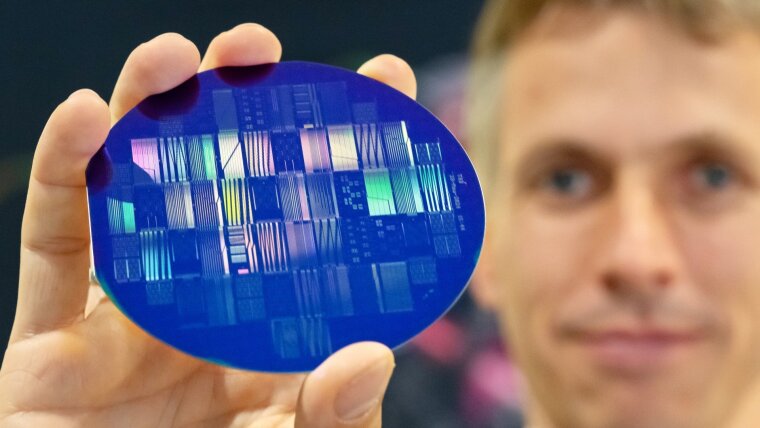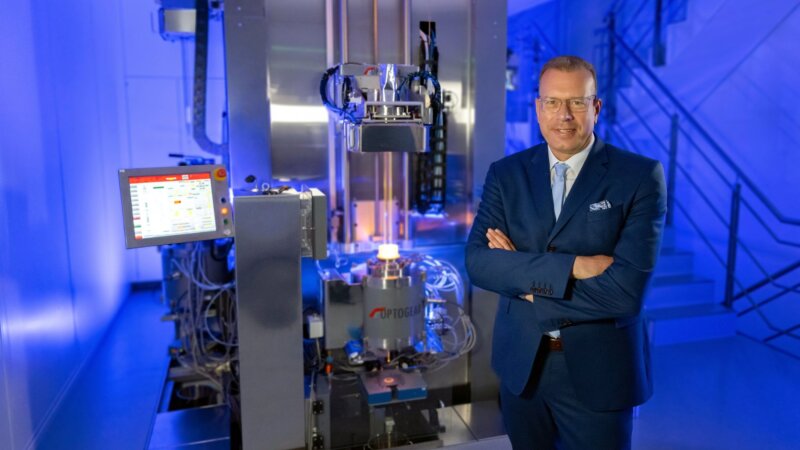
- Light
Published: | By: Marco Frezzella
Source article
The Innovation Center for Quantum Optics and Sensor Technology InQuoSens is entering its second phase. The centre, which is based at Friedrich Schiller University Jena and Technische Universität Ilmenau, today received a grant of 6.26 million euros over four and a half years from Wolfgang Tiefensee, Thuringia's Minister for Economic Affairs, Science and Digital Society. This will enable the innovation centre to further develop future technologies at the interface of photonics and sensor technology, which are intended to harness quantum phenomena, develop innovative applications and open up new future markets. The InQuoSens innovation centre was founded in 2017.
When handing over the funding decisions that were co-financed by the European Union as part of the ERDF programme to TU Ilmenau and Friedrich Schiller University Jena, Minister Wolfgang Tiefensee said that Thuringia should become a leading European location for quantum technologies: "Thuringia recognized the potential of quantum technologies early on and has been strategically investing in the development and expansion of its expertise for several years." Including ongoing projects, the state alone will provide around 35 million euros in funding for quantum research by the end of 2024 – including to InQuoSens in Jena and Ilmenau, but also to the quantum application laboratory that opened in Erfurt in 2020, for example.
In addition, there are currently ongoing federal projects totalling around 60 million euros, for example in the field of quantum communication. "With InQuoSens II and the stronger focus on so-called Q-PICs technology – highly innovative quantum photonic integrated circuits – we are now taking the next important step towards becoming a nationally significant research and production centre for quantum technologies. Our aim must be for Thuringia to position itself visibly in this important field of the future at a supra-regional level," said Tiefensee.
Quantum phenomena for modern applications
Our world is made up of quanta, the smallest building blocks of light and energy. These elementary particles are subject to their own laws and physical principles that seem to contradict our everyday understanding. Although some quantum phenomena have been known for over 100 years, we only use a few of them today as the basis for modern technology, such as microchips or broadband internet: first-generation quantum technologies. Other fascinating properties of the smallest indivisible units of the quantum world, such as entanglement or superposition, are now being used at the Thuringian Innovation Center InQuoSens for completely new, ground-breaking technical solutions in the macro world.
At the Innovation Center for Quantum Optics and Sensor Technology, the Abbe Center of Photonics at the University of Jena and the Institute for Micro- and Nanotechnologies MacroNano at TU Ilmenau work hand in hand: while the natural scientists in Jena focus more on the study of material science and quantum physics, the engineering scientists in Ilmenau concentrate on the application-oriented integration of components and structures. The cooperation between the two research centres, which are technologically complementary, makes it possible to cover the entire scientific process chain from basic research, process development and characterization to system integration and prototype development in quantum optics and sensor technology, and also to consider the requirements of the industry at all times.
Integrated quantum photonic circuits
The second phase of InQuoSens focuses on precisely this commercial utilization by the industry. The development of Q-PICs is the order of the day. So far, the technologies developed in InQuoSens cannot yet be integrated into an overall system, as such quantum photonic systems still consist of numerous individual components that are practically assembled by hand – their application-oriented use is therefore still very limited. The ambitious goal of InQuoSens ll is to research integrated quantum photonic circuits – a huge technological leap compared to the current state of the art.
The photonic-integrated circuits, some of which are already commercially available today and are used on microchips like conventional optical components, are characterized by their energy efficiency and environmental friendliness and can be used in future 5G/6G communication systems, for example. The transfer of these chips to the quantum world and the utilization of the corresponding physical phenomena, such as so-called entanglement, will enable InQuoSens II to research and produce completely new quantum-photonic integrated circuits, i.e. Q-PICs. They consist of special optical circuits and will be very small, fast and stable and consume little energy. In just a few years, they will be an important platform for new technologies and applications such as photonic quantum information processing and quantum-enhanced sensors, as well as for AI technologies such as machine learning and optical neural networks.
A second quantum revolution
With the funding of InQuoSens ll, the technological infrastructure and technical expertise at the Abbe Center of Photonics in Jena and the Institute for Micro- and Nanotechnologies in Ilmenau are now being expanded at the interface of photonics, electronics and quantum physics. The common goal: new, highly efficient technologies and applications that far outshine the performance of conventional systems with unprecedented speed, precision and efficiency: in quantum communication, quantum sensor technology and quantum imaging.
The spokesperson of InQuoSens ll, Professor Andreas Tünnermann from the University of Jena and also Director of the Institute of Applied Optics and Precision Engineering IOF, which is a close cooperation and practical partner for the applicability of the technologies developed in InQuoSens, expects a second quantum revolution in the coming decades that could change our society in a way that only digitalization has done in the last 20 years.
Prof. Dr Andreas Tünnermann from the University of Jena and the Fraunhofer Institute für Applied Optics and Precision Engineering IOF is the spokesperson for the "InQuoSens" innovation centre.
Image: Jens Meyer (University of Jena)